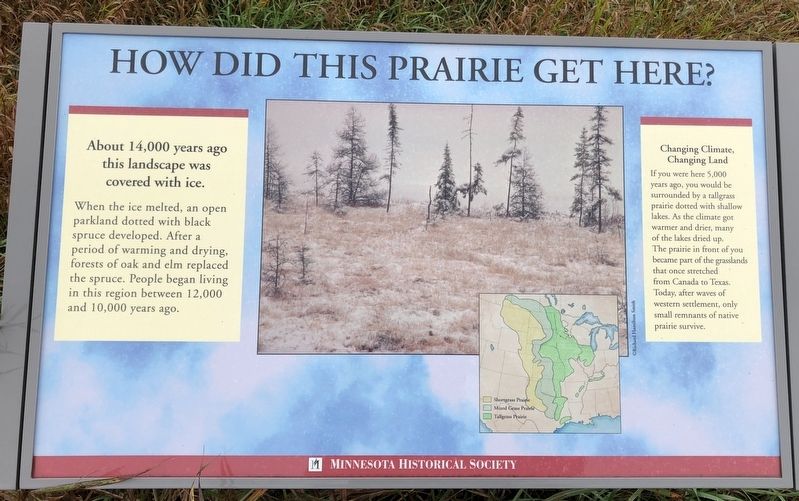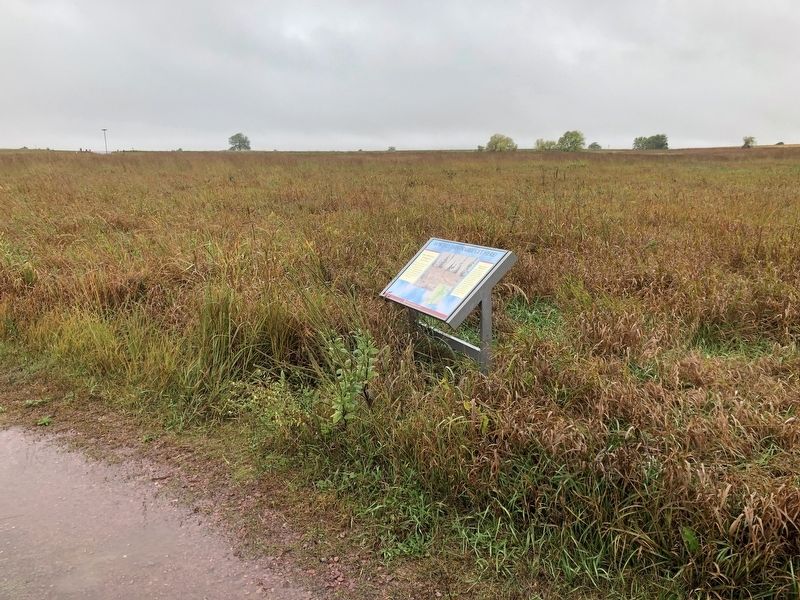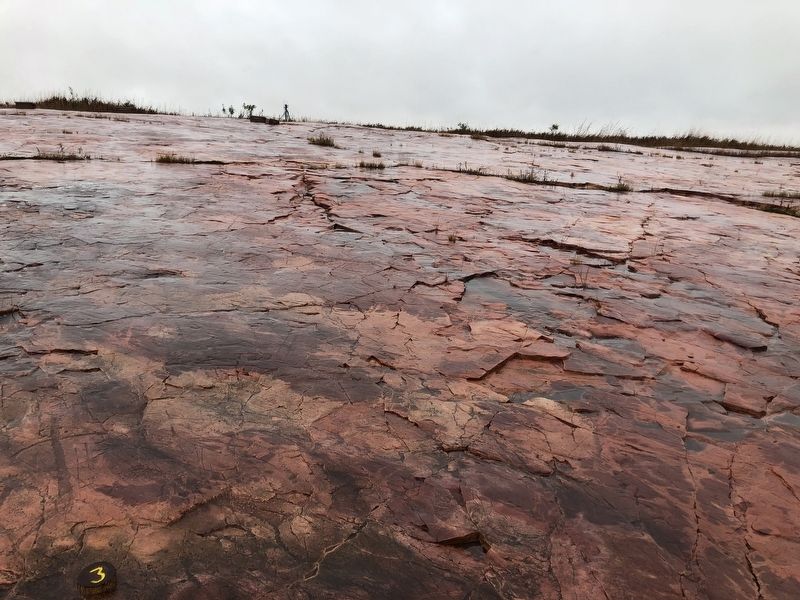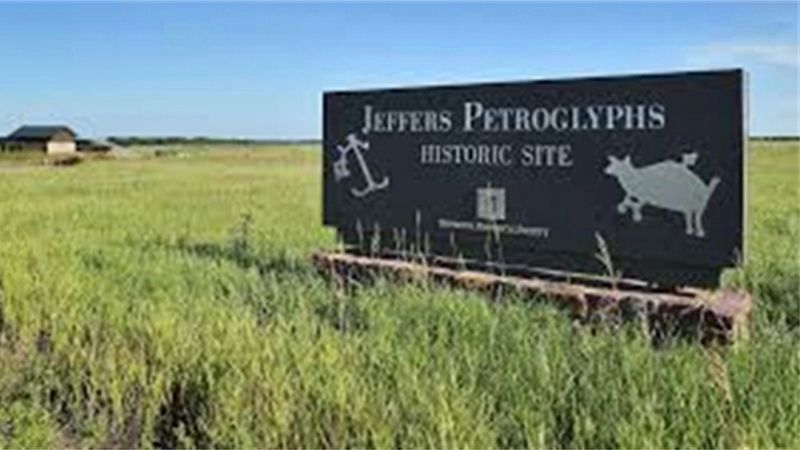How did this Prairie get here?
About 14,000 years ago this landscape was covered with ice.
When the ice melted, an open parkland dotted with black spruce developed. After a period of warming and drying, forests of oak and elm replaced the spruce. People began living in this region between 12,000 and 10,000 years ago.
Changing Climate, Changing Land
If you were here 5,000 years ago, you would be surrounded by a tallgrass prairie dotted with shallow lakes. As the climate got warmer and drier, many of the lakes dried up. The prairie in front of you became part of the grasslands that once stretched from Canada to Texas. Today, after waves of western settlement, only small remnants of native prairie survive.
Erected by Minnesota Historical Society.
Topics. This historical marker is listed in these topic lists: Environment • Horticulture & Forestry • Parks & Recreational Areas.
Location. 44° 5.46′ N, 95° 3.416′ W. Marker is near Comfrey, Minnesota, in Cottonwood County. Marker can be reached from 510th Avenue (County Road 2). Marker is located along a trail in the Jeffers Petroglyphs Historic Site. Touch for map. Marker is at or near this postal address: 27160 CR-2, Comfrey MN 56019, United States of America. Touch for directions.
Other nearby markers. At least 8 other markers are within 11 miles of
More about this marker. The Jeffers Petroglyphs is home to about 5,000 sacred rock carvings, also called petroglyphs, made by the ancestors of today’s Native Americans. Jeffers tells the story of this continent like no other place — connecting visitors to those who lived and traveled in ancient times across what is now known as North America.
Also see . . . More at the Jeffers Petroglyphs website. (Submitted on October 9, 2019, by Ruth VanSteenwyk of Aberdeen, South Dakota.)
Credits. This page was last revised on October 10, 2019. It was originally submitted on October 9, 2019, by Ruth VanSteenwyk of Aberdeen, South Dakota. This page has been viewed 139 times since then and 11 times this year. Last updated on October 10, 2019, by Ruth VanSteenwyk of Aberdeen, South Dakota. Photos: 1, 2, 3, 4. submitted on October 9, 2019, by Ruth VanSteenwyk of Aberdeen, South Dakota. • Mark Hilton was the editor who published this page.



